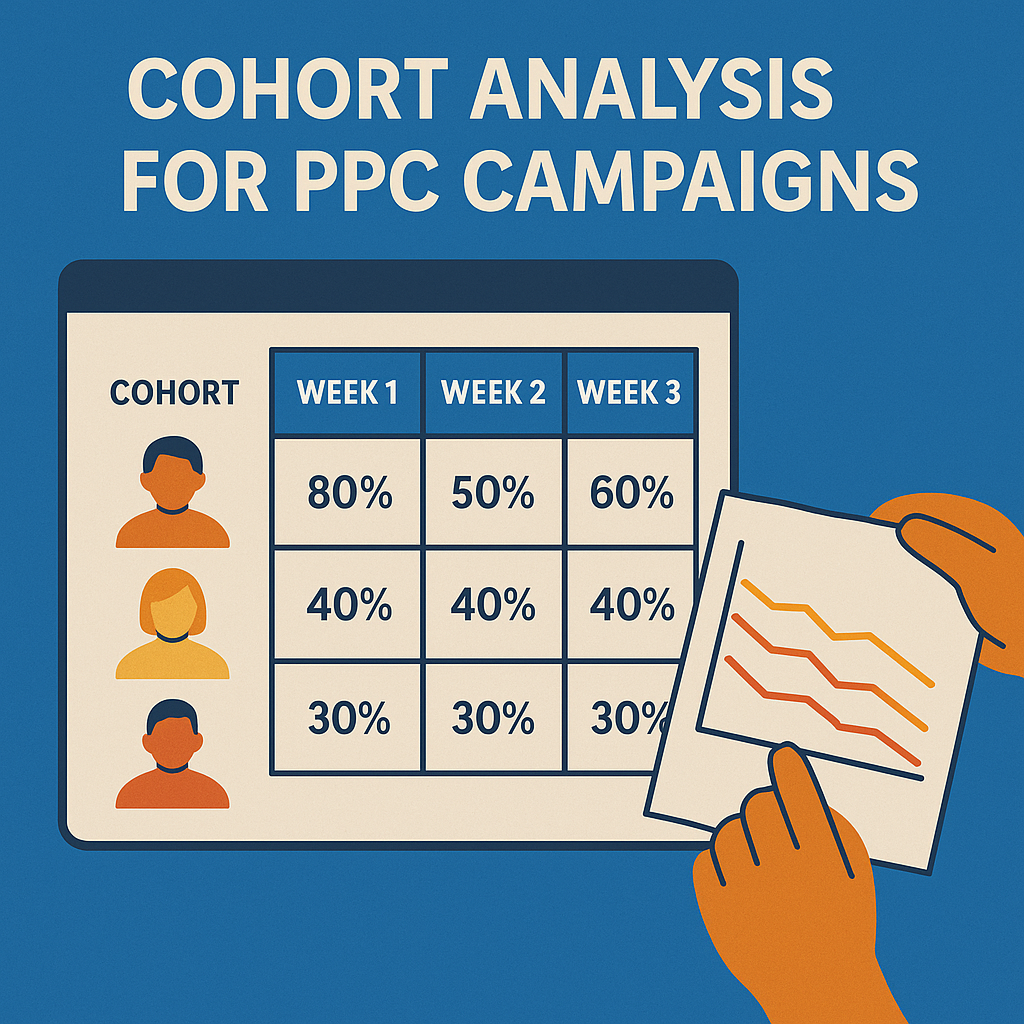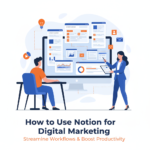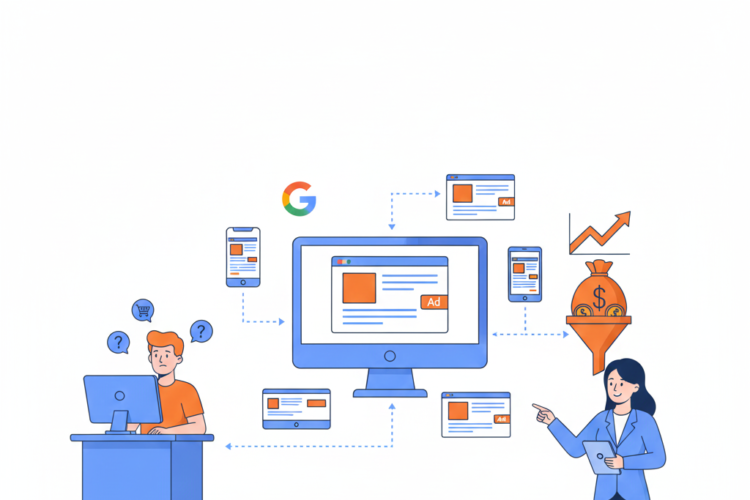
Cohort Analysis for PPC Campaigns: A Data-Driven Strategy for Smarter Advertising
Cohort analysis is a powerful yet underutilized approach in pay-per-click (PPC) advertising. Instead of lumping all users into one group, cohort analysis breaks them down based on shared characteristics or behaviors—helping advertisers understand how different segments respond to campaigns over time.
This guide will walk you through what cohort analysis is, why it matters for PPC, and how to implement it effectively to maximize ROI.
📌 What Is Cohort Analysis in PPC?
Cohort analysis in PPC means analyzing the behavior and performance of a group of users (a cohort) who share a common trait—typically based on when they clicked an ad, converted, or entered your funnel.
📊 Example Cohorts:
Users who clicked ads during the first week of a campaign
Leads generated in Q1 2024
Customers acquired through a specific keyword or ad group
Instead of looking at broad metrics like cost per conversion, cohort analysis helps you answer:
“Do leads from March convert into repeat buyers more than those from February?”
💡 Why Use Cohort Analysis in PPC Campaigns?
| Benefit | Description |
|---|---|
| Understand user quality | Not all conversions are equal—cohorts show retention and LTV patterns |
| Reveal delayed ROI | Some campaigns generate revenue weeks or months later |
| Identify seasonal shifts | Understand how cohorts behave based on time of year or launch timing |
| Refine ad targeting | Tailor campaigns based on which cohorts perform best over time |
✅ Common Cohort Dimensions in PPC
You can segment cohorts in PPC by a variety of attributes:
📆 Time-based Cohorts
Week/month of acquisition
Day of the week
Campaign phase (pre/post promo)
📣 Campaign Attribute Cohorts
Ad group or keyword
Campaign type (search, display, YouTube)
Device or location
🎯 Audience-based Cohorts
Demographics (age, gender)
Funnel stage (TOFU, MOFU, BOFU)
Source (remarketing vs. cold)
🔧 How to Set Up a Cohort Analysis for PPC
Step 1: Choose the Goal
Start by identifying the key metric you want to track across cohorts:
Customer lifetime value (LTV)
Retention rate
Revenue per user
Time-to-conversion
Churn rate
Step 2: Define the Cohort Grouping
Decide how you’ll break down users.
Example:
You want to track new leads acquired via Google Ads in Q1 and compare their long-term purchase behavior against Q2 leads.
You now have:
Cohort 1: Leads acquired Jan–Mar
Cohort 2: Leads acquired Apr–Jun
Step 3: Extract the Data
Use data sources such as:
Google Ads (for acquisition date, ad/campaign ID, CPC, CTR)
Google Analytics 4 (GA4) (for behavioral and conversion data)
CRM or backend database (for LTV, retention, upsells)
You may need to stitch data across platforms using:
Customer IDs
GCLID (Google Click Identifier)
UTM parameters
Step 4: Build the Cohort Table
Organize your data in a cohort grid (weekly or monthly).
| Cohort (Acquired In) | Month 1 Revenue | Month 2 Revenue | Month 3 Revenue | Total LTV | ROAS |
|---|---|---|---|---|---|
| Jan 2024 | $2,000 | $1,200 | $800 | $4,000 | 4.2x |
| Feb 2024 | $1,600 | $800 | $200 | $2,600 | 2.3x |
| Mar 2024 | $3,000 | $2,000 | $1,500 | $6,500 | 6.8x |
This shows which acquisition windows generated the most valuable users over time.
Step 5: Analyze and Optimize
Look for patterns like:
Decay in retention: When does customer drop-off spike?
High-value timeframes: Which month/week yielded better LTV?
Performance by campaign: Are certain ads generating better long-term users?
Then:
Reallocate budget to higher-performing cohorts
Pause campaigns with low LTV
Test ad creatives that attracted your top cohort
🧠 Examples of Cohort-Based Insights in PPC
🔄 Example 1: Retargeting Cohorts vs Cold Traffic
Insight: Retargeted users from Q1 showed 3x higher LTV than cold leads
Action: Increase retargeting budget and create lookalikes
📉 Example 2: Mobile vs Desktop Acquisition
Insight: Mobile-acquired users churn after 1 month
Action: Improve mobile onboarding UX or change targeting
📈 Example 3: Keyword-Based Cohorts
Insight: Users acquired via branded keywords had 2x conversion rate over time
Action: Prioritize branded campaigns with dedicated landing pages
🧰 Tools for Cohort Analysis
| Tool | Use Case |
|---|---|
| Google Analytics 4 (GA4) | Built-in cohort analysis feature |
| Looker Studio (Data Studio) | Custom cohort dashboards |
| BigQuery + GA4 | Advanced cross-platform cohort modeling |
| Excel/Google Sheets | Manual cohort table creation |
| Segment, Amplitude, Mixpanel | Product-led PPC + behavior cohorting |
🚀 Best Practices for Cohort Analysis in PPC
Don’t rely only on CPA or ROAS—track long-term metrics like LTV and retention
Combine ad + backend data for full-funnel insight
Keep analysis time-framed consistently (e.g., weekly or monthly cohorts)
Use filters to isolate high-value users (e.g., buyers who returned within 7 days)
Test and iterate—use findings to refine audience segments, bids, and ad creative
📌 Final Thoughts
Cohort analysis turns one-dimensional PPC metrics into rich behavioral insights. It helps answer critical questions like:
Are we attracting loyal customers or one-time buyers?
Which campaigns produce value that grows over time?
Where should we really invest our ad spend for scale?
By implementing cohort analysis, you elevate your PPC strategy from short-term thinking to long-term performance optimization.
Author



